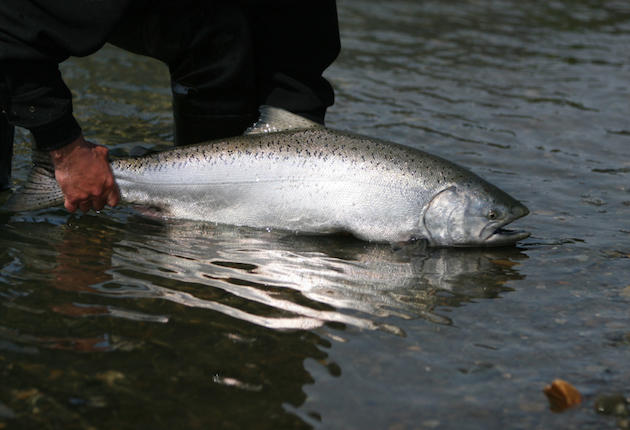Everything from cholesterol medications to anti-inflammatory pills are making their way into the Puget Sound. Officials are finding drugs like Lipitor, Prozac, and Advil in the waters of the Washington State inlet, likely entering the water via wastewater — old prescriptions flushed down the toilet rather than disposed of properly by their users.
More troubling than where they came from is where they’re ending up. The chemicals found in the medications were recently discovered in the soft tissue of juvenile Chinook salmon in the sound. While juveniles are rare table fare, the medications pose a major risk to the environment.
The National Oceanic and Atmospheric Administration published a scientific paper Feb. 21 detailing a study it conducted in the Puget Sound. Three local estuaries — one near Tacoma, another near Dupont, and one near Bremerton — were tested in September 2014, along with the effluent from two local wastewater treatment plants. Of the 150 compounds tested for (the drugs most commonly used and likely to be found), the researchers found 81 in the wastewater effluent, 25 in the estuary water, and 42 in the soft tissue of Chinook and Pacific staghorn sculpin.
The medication can have effects on their reproduction, behavior, growth, and more.
The typical medicine cabinet contents weren’t the only drugs found. Valium, cocaine, Oxycontin, and others were also present in the salmon flesh.
Researcher James Meador, the lead writer on the recent NOAA paper, published another paper in 2013 describing the survival rates of Puget Sound Chinook. He studied 111 fish in that paper’s research and found 53 percent tainted by the drugs.
Meador pointed to the high rates of feeding and gill ventilation in salmonids as the reason for such high bioaccumulation in Chinook.
The fish will probably continue to suffer as the region’s population grows, but the area’s drinking water is reportedly safe. Seattle Public Utilities provides residents with water from high in the Cascade Mountains, far removed from the effluent and estuaries.
Cover photo via iStock

